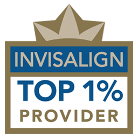Early Prevention
Early Orthodontic Treatment for Children
What’s the distinction between early orthodontic therapy and normal orthodontic treatment, and why could my kid require early treatment? ‘ Why is it better for my child’s health if he or she receives therapy early?
To name a few, children who get orthodontic treatment at an early age have many questions. Children as young as seven should begin seeing an orthodontist, according to the American Association of Orthodontists (AAO). During this appointment, the orthodontist will determine whether or not your child needs orthodontic treatment.
When children are eight or nine years old, early therapy (also known as Phase One) starts (Phase Two will begin around age 11 or older). Preventing or reversing some biting issues, such as an underbite, may be accomplished by early treatment. As a result, extractions are less likely in the future if therapy is started early enough.
Signs your child may be a candidate for early orthodontic treatment:
- Early or late infant tooth loss (your child should typically start losing teeth around age five, and will have all permanent teeth around age 13)
- Biting or chewing is difficult for you.
- Breathing via the mouth
- After the age of five, your kid may still be sucking his or her thumb.
- Speech impediment
- Teeth that are showing (the top teeth and the bottom teeth extend away from each other)
- Teeth that do not fit together in a typical way
- When your youngster opens or shuts his or her mouth, the jaw moves (crossbites)
- Dentures in the front teeth at a young age
What are the most common causes of orthodontic issues, and what are the advantages of starting treatment early?
Problems with dental alignment and bite may be passed down genetically or be the result of trauma to the mouth, tooth loss that occurs too early in life or too late, or thumb-sucking habits, all of which can lead to orthodontic issues including crowding and overcrowding.
By the time they reach their late teens, most youngsters have lost all of their baby teeth and the jaw bones have hardened and stopped developing. Patients in their 30s and 40s may have to wait longer for orthodontic treatment and may need a tooth extraction or oral surgery. Children who are treated as children may avoid the need for orthodontics in adulthood, reducing the risk of extraction or surgery in the long run.
Whether your kid is in the 7- to 8-year-old age range and exhibiting symptoms of orthodontic need, or if your family dentist has recommended a visit to the orthodontist, we encourage you to call our office to arrange an appointment. Our experts will do an initial assessment of your kid and discuss with you the best ways to care for your child’s smile with you in mind.











